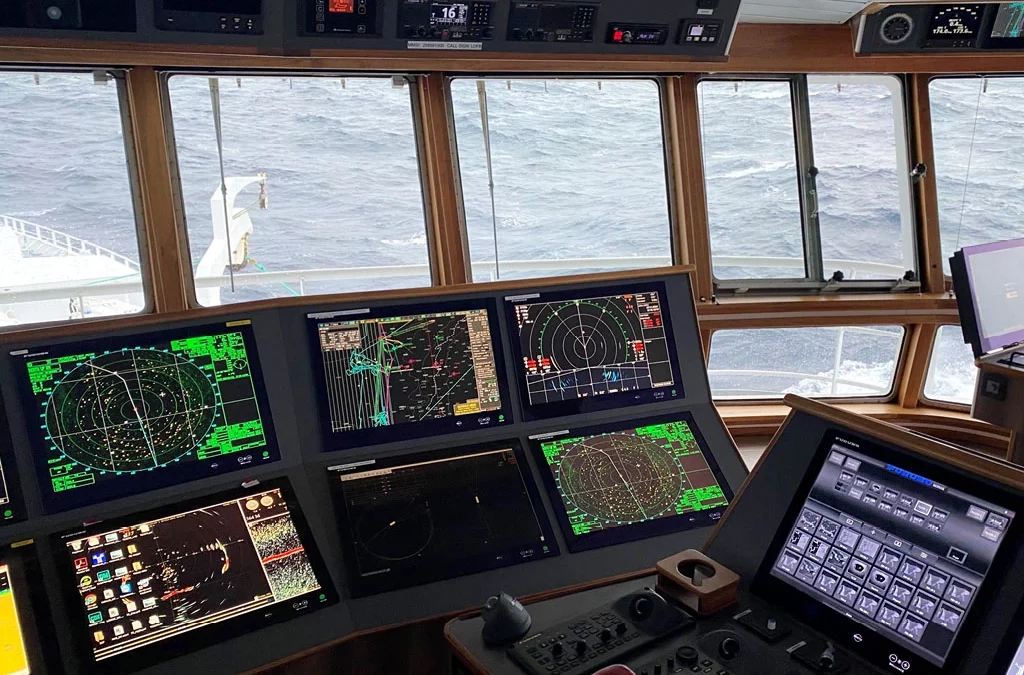
by Barani Chettiar | May 1, 2024 | Uncategorized
Key Features to Look for in a Marine Chartplotter for Commercial Vessels
In the intricate dance of commercial maritime operations, precision and accuracy are non-negotiable. Marine chartplotters have become the unsung heroes, providing captains and navigators with invaluable tools for efficient and safe navigation. In this blog post, we’ll explore the importance of marine chartplotters and delve into the key features that commercial vessel operators should consider when choosing the right one. From display specifications to integration capabilities, we’ll navigate through the essential elements that make a chartplotter a vital companion on the open seas.
Importance of Marine Chartplotters
Marine chartplotters are central to modern navigation, offering a digital representation of nautical charts and real-time vessel information. These devices contribute significantly to route planning, collision avoidance, and overall situational awareness. Their integration with Global Positioning System (GPS) technology has revolutionized marine navigation, providing precise location data and enhancing the safety and efficiency of commercial vessels.
Display Size and Resolution
The visibility and clarity of information on a chartplotter’s display are paramount for effective navigation. When choosing a chartplotter for commercial vessels, consider the size and resolution of the display. A larger screen allows for better readability, especially in challenging weather conditions. High resolution ensures that charts, symbols, and data are displayed with clarity, providing navigators with accurate information at a glance.
GPS Accuracy and Tracking Features
The heart of any chartplotter lies in its GPS capabilities. Accurate and reliable GPS positioning is crucial for plotting precise routes and avoiding potential hazards. Look for chartplotters with high-quality GPS receivers and consider models that support multiple satellite constellations for enhanced accuracy. Tracking features, such as breadcrumb trails and waypoint management, further contribute to effective navigation and route optimization.
Integration with Other Navigation Systems
In the interconnected world of marine navigation, the ability of a chartplotter to seamlessly integrate with other navigation systems is a key consideration. Look for chartplotters that support integration with radar systems, Automatic Identification System (AIS), and Electronic Chart Display and Information Systems (ECDIS). This integration ensures a comprehensive and unified navigational experience, allowing operators to make informed decisions based on a consolidated view of relevant data.
Weather and Traffic Information Integration
Commercial vessels operate in dynamic environments where real-time weather and traffic information is invaluable. Choose a chartplotter that can integrate weather updates and traffic data. Having access to current weather conditions and traffic patterns allows captains to make informed decisions, adjust routes, and ensure the safety of both the vessel and its crew.
Durability and Water Resistance
Marine environments can be harsh, exposing electronic equipment to challenging conditions such as salt spray and moisture. Select a chartplotter with a robust and durable design, built to withstand the rigors of maritime use. Look for devices with high water resistance ratings to ensure functionality even in wet and demanding conditions. Durability is a crucial factor in ensuring the longevity and reliability of the chartplotter in the demanding marine setting.
Conclusion: Choosing the Right Chartplotter for Safety
In the ever-evolving landscape of marine navigation, the right chartplotter can be a captain’s most trusted ally. To explore a comprehensive range of marine navigation equipment, including chartplotters, visit www.tecomart.co. When selecting a chartplotter for commercial vessels, prioritize features such as display size and resolution, GPS accuracy, integration capabilities, weather and traffic information integration, and durability. By choosing the right chartplotter, you’re not just investing in a device – you’re investing in the safety and efficiency of your commercial vessel operations. So, navigate wisely, and may your voyages be as smooth as the technology guiding your way.
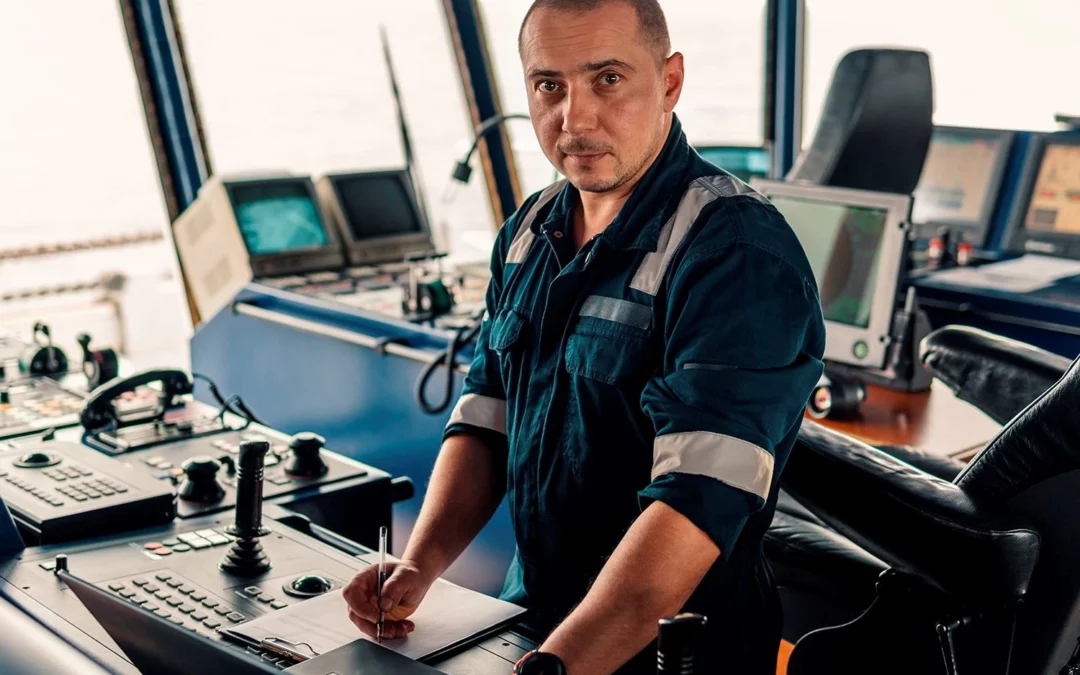
by Barani Chettiar | Apr 30, 2024 | Uncategorized
Introduction: Navigating the Seas of Safety with Well-Maintained Equipment
Embarking on a maritime journey requires more than just a seaworthy vessel; it demands precision, accuracy, and a keen understanding of the importance of well-maintained marine navigational equipment. In this blog post, we’ll explore essential tips and practices for ensuring the longevity and reliability of nautical navigation equipment. Whether you’re a seasoned sailor or a novice at sea, understanding these maintenance and storage guidelines is crucial for a safe and successful voyage.
Regular Maintenance: Cleaning and Inspection Procedures
To guarantee the seamless operation of marine navigation equipment, regular maintenance is paramount. Begin with a routine cleaning schedule, ensuring that devices are free from salt deposits, debris, and other contaminants. Wipe down surfaces with a soft, damp cloth and use mild detergents to remove stubborn grime. Regular inspections should follow, checking for loose connections, frayed wires, or any signs of wear and tear. Promptly address any issues to prevent potential malfunctions during critical moments at sea.
Calibration Checks: Ensuring Accuracy of Instruments
Accurate readings are the lifeblood of marine navigation, making calibration checks a non-negotiable aspect of maintenance. Periodically calibrate your marine navigational equipment to guarantee precise measurements. Utilize certified calibration tools and, if needed, consult a professional to ensure the instruments meet industry standards. Reliable equipment not only enhances navigational accuracy but also contributes significantly to the safety of your maritime endeavors.
Proper Storage: Protecting from Moisture and Damage
The sea’s salty air can wreak havoc on marine navigation equipment, accelerating wear and corrosion. Proper storage is the key to protecting your instruments from moisture and potential damage. When not in use, store equipment in a dry and secure location. Invest in protective covers to shield devices from dust and humidity, and consider using moisture-absorbing products to maintain an optimal environment within storage spaces. These precautions may seem small, but they go a long way in preserving the functionality and lifespan of your nautical navigation equipment.
Battery Management: Maintaining Power Supply
The reliability of marine navigational equipment is directly tied to its power source. Regularly inspect batteries for signs of corrosion, leaks, or low voltage. Replace batteries as needed, adhering to the manufacturer’s guidelines. For devices with rechargeable batteries, follow proper charging practices and avoid overcharging, which can diminish battery life. A well-maintained power supply ensures that your equipment remains operational when it matters most, providing peace of mind during your maritime ventures.
Software Updates: Keeping Systems Up-to-Date
In the ever-evolving world of technology, software updates are crucial for the optimal performance of marine navigational equipment. Check for updates regularly and follow the manufacturer’s instructions for installing the latest firmware. Software updates often include improvements to functionality, bug fixes, and enhanced security features, ensuring that your equipment remains at the forefront of technological advancements. Stay informed about updates from your marine navigation equipment supplier, and take advantage of advancements to enhance the capabilities of your instruments.
Conclusion: The Anchor of Safety Lies in Proper Maintenance
In the realm of marine navigation, safety is paramount, and it begins with the proper maintenance and storage of navigational equipment. By adhering to a routine of regular cleaning, calibration checks, proper storage practices, vigilant battery management, and staying current with software updates, you fortify your vessel against the uncertainties of the open sea. Remember, a well-maintained and reliable navigation system is not just a convenience—it’s a necessity for a safe and successful maritime journey. So, whether you’re looking to buy marine radar or explore boat radar for sale, prioritize the upkeep of your equipment, and navigate the seas with confidence. Visit www.tecomart.co for a comprehensive selection of marine navigation equipment to enhance your nautical adventures.
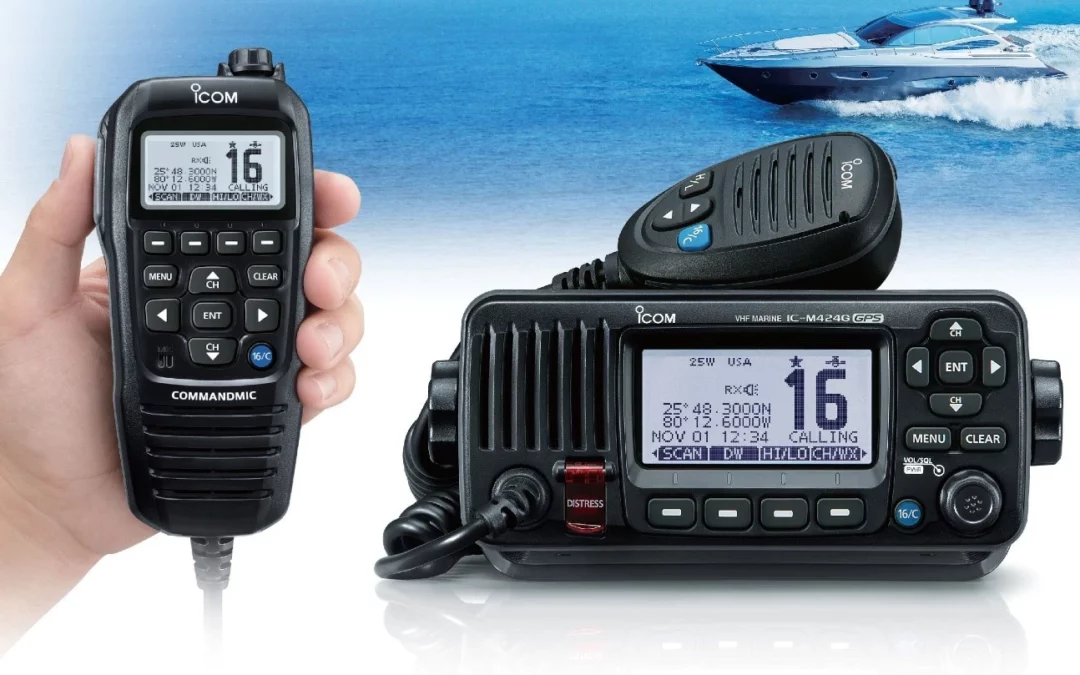
by Barani Chettiar | Apr 29, 2024 | Uncategorized
Introduction: Importance of Marine Radios with GPS/Chartplotter
In the intricate dance of marine navigation, having precise and real-time information is paramount. The integration of Global Positioning System (GPS) and chartplotter functionalities into marine radios has transformed the maritime landscape. This article explores the benefits of marine radios equipped with integrated GPS and chartplotter functions, highlighting their crucial role in enhancing safety, navigation efficiency, weather monitoring, communication, and overall cost-effectiveness.
Enhanced Safety: Immediate Location Identification in Emergencies
One of the primary advantages of marine radios with integrated GPS and chartplotter functions is the immediate identification of a vessel’s location in emergencies. In distress situations, such as collisions or unexpected weather events, the integrated GPS provides accurate coordinates, aiding search and rescue operations. This capability significantly reduces response time, enhancing the safety of both crew members and the vessel.
Navigation Efficiency: Real-Time Positioning for Accurate Navigation
Accurate navigation is the backbone of safe maritime travel. Marine radios with integrated GPS and chartplotter functions provide real-time positioning information, allowing sailors to navigate with precision. The combination of GPS and chartplotter features enables the display of the vessel’s position on electronic charts, ensuring that navigators can make informed decisions based on up-to-date and accurate data.
Weather Monitoring: Access to Weather Updates for Safe Sailing
Weather conditions can change rapidly at sea, posing challenges to navigation and safety. Marine radios with integrated GPS and chartplotter functions often come equipped with weather monitoring capabilities. This allows sailors to access real-time weather updates, including wind speed, wave height, and storm alerts. Armed with this information, sailors can make informed decisions about route adjustments, ensuring a safer and more efficient voyage.
Communication Ease: Seamless Communication with Other Vessels
Effective communication is essential for the safety and coordination of vessels at sea. Marine radios with integrated GPS and chartplotter functions streamline communication by combining essential navigation and communication tools in a single device. This integration allows for seamless communication with other vessels, harbor authorities, and maritime services. It promotes efficient collaboration, especially in busy waterways where clear communication is crucial.
Cost-Effective Solution: Combination of Essential Functions in One Device
Marine radios with integrated GPS and chartplotter functions offer a cost-effective solution by combining multiple essential functions into a single device. Rather than investing in separate GPS devices, chartplotters, and radios, mariners can benefit from an all-in-one solution. This not only reduces the equipment footprint on board but also simplifies installation, maintenance, and overall operational costs.
Conclusion: Marine Radios with Integrated GPS/Chartplotter Offer Numerous Benefits
In conclusion, marine radios equipped with integrated GPS and chartplotter functions have become indispensable tools for modern sailors. The seamless integration of navigation and communication features enhances safety, efficiency, and overall situational awareness at sea. The immediate identification of a vessel’s location in emergencies, real-time positioning for accurate navigation, access to weather updates, seamless communication with other vessels, and the cost-effective combination of essential functions make these devices a valuable asset for maritime professionals.
As technology continues to advance, marine radios with integrated GPS and chartplotter functions will likely play an even more significant role in shaping the future of maritime navigation. The benefits they offer contribute not only to the safety of individual vessels but also to the overall efficiency and sustainability of maritime travel, ensuring that sailors can navigate the vast oceans with confidence and precision.
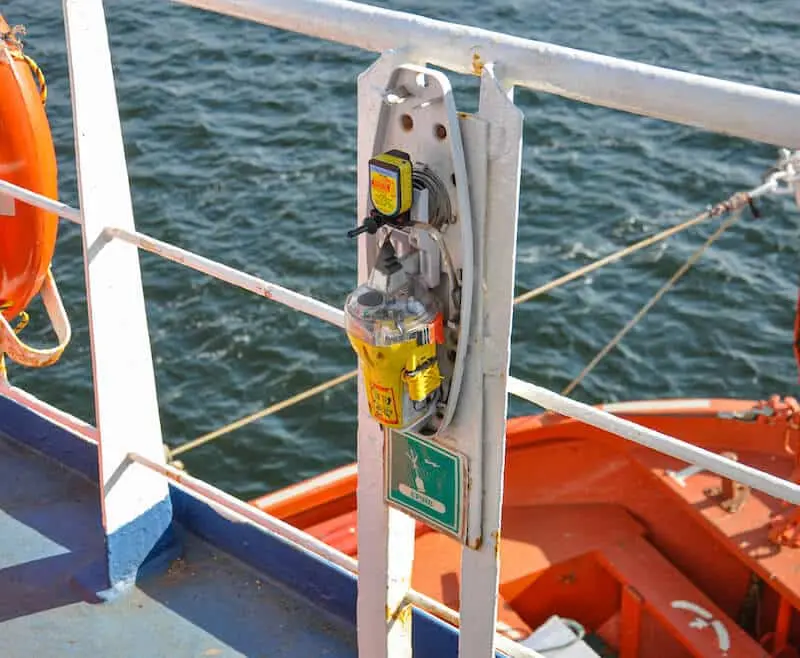
by Barani Chettiar | Apr 27, 2024 | Uncategorized
Introduction: Importance of EPIRB in Maritime Emergencies
In the unpredictable realm of maritime environments, where rapid response is often the difference between life and death, Emergency Position Indicating Radio Beacons (EPIRBs) stand as crucial devices for ensuring the safety of vessels and their crew members. This article delves into the essential role of EPIRBs in maritime safety, exploring their definition, types, operation, benefits, and the regulatory framework governing their use.
What is an EPIRB: Definition and Purpose
An EPIRB, or Emergency Position Indicating Radio Beacon, is a distress signal device designed to transmit a radio signal in the event of an emergency at sea. Its primary purpose is to alert search and rescue authorities to the precise location of a vessel in distress, enabling a swift and coordinated response. EPIRBs are equipped with a Global Positioning System (GPS) receiver, ensuring accurate positioning information is included in the distress signal.
Types of EPIRB: Category Distinctions and Features
There are two main categories of EPIRBs:
- Category I EPIRBs: These are designed to automatically float free from a sinking vessel and activate when submerged. They are equipped with hydrostatic release mechanisms, ensuring deployment in case of a maritime emergency.
- Category II EPIRBs: Typically manually activated, these beacons are intended for use on vessels that remain afloat. They are manually deployed by the crew when distress situations arise.
EPIRBs also come in two frequencies: the traditional 121.5 MHz frequency, and the modern 406 MHz frequency, which provides more accurate positioning and is the standard for satellite-based search and rescue systems.
How Does an EPIRB Work: Operation Process Explained
When activated, an EPIRB sends a distress signal via satellite and, in the case of Category II beacons, can also emit a homing signal on the 121.5 MHz frequency for local search and rescue teams. The satellite signal ensures global coverage, allowing for a rapid response even in remote maritime regions. The integrated GPS receiver provides precise location data, significantly reducing search time and increasing the chances of successful rescue operations.
Benefits of EPIRB in Saving Lives
The primary benefit of EPIRBs is their capacity to save lives in emergencies. The swift and accurate transmission of distress signals ensures that search and rescue teams can quickly locate and reach vessels in distress. The integration of GPS technology enhances the precision of locating distressed vessels, minimizing search areas and expediting rescue operations. The timely response facilitated by EPIRBs significantly increases the likelihood of successful outcomes in maritime emergencies.
Regulations and Requirements for EPIRB Use
The use of EPIRBs is governed by international regulations, including those set by the International Maritime Organization (IMO). These regulations mandate the carriage of EPIRBs on certain types of vessels, specifying the type, frequency, and proper functioning of the beacons. Regular testing and maintenance are required to ensure the reliability of EPIRBs when needed most. Compliance with these regulations is not only a legal requirement but also a fundamental aspect of responsible maritime operation.
Conclusion: Vital Role of EPIRB in Maritime Safety
In conclusion, EPIRBs play a vital role in ensuring maritime safety by providing an effective and reliable means of signaling distress in emergencies. Their capacity to transmit accurate location data swiftly to search and rescue authorities contributes significantly to the success of rescue operations. Understanding the distinctions between EPIRB categories, their operational processes, and the regulatory requirements governing their use is essential for maritime professionals and vessel operators. As vessels traverse the unpredictable waters, the deployment of EPIRBs becomes more than a safety measure; it becomes a beacon of hope, enabling a rapid and coordinated response that can make all the difference in saving lives at sea.
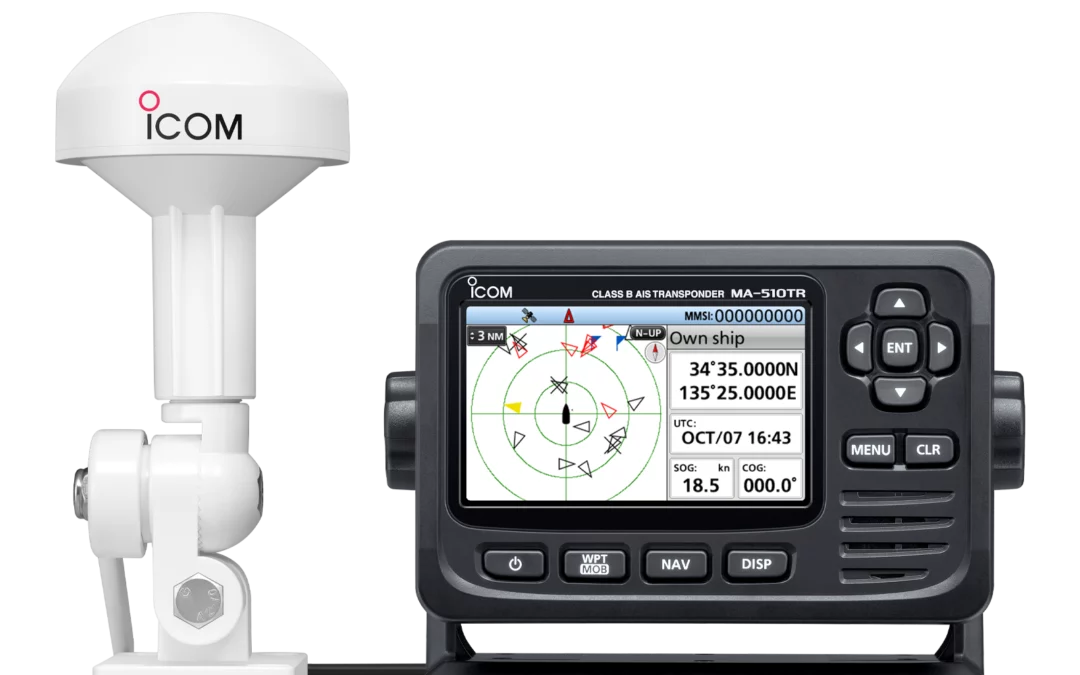
by Barani Chettiar | Apr 26, 2024 | Uncategorized
Introduction: Overview of AIS Technology in Ports
In the ever-evolving landscape of maritime technology, Automatic Identification System (AIS) has emerged as a transformative force in vessel traffic management, particularly within commercial ports. AIS technology, initially designed for collision avoidance, has evolved to become a cornerstone in optimizing vessel tracking and management, enhancing safety measures, and integrating seamlessly with port operations.
Evolution: Development and Adoption of AIS
The development of AIS can be traced back to the late 20th century when maritime authorities sought a reliable system for avoiding collisions and ensuring the safe navigation of vessels. The International Maritime Organization (IMO) mandated the adoption of AIS on certain types of vessels in 2002. Since then, AIS has undergone significant advancements, and its adoption has become widespread, transforming how vessel traffic is managed in commercial ports globally.
Efficiency: Improved Vessel Tracking and Management
One of the primary impacts of AIS on commercial ports is the improvement in vessel tracking and management. AIS enables real-time tracking of vessels within the port, providing harbor authorities, port operators, and other stakeholders with accurate and up-to-date information on the location, speed, and identity of each vessel. This real-time data facilitates more efficient traffic management, reducing congestion, and optimizing the allocation of berths and resources.
Safety: Enhancing Maritime Safety Measures
AIS has had a profound impact on maritime safety within commercial ports. By providing continuous updates on vessel movements, AIS contributes to the prevention of collisions and groundings. The technology enhances situational awareness for both vessel operators and port authorities, allowing for proactive measures to avoid potential hazards. The integration of AIS data with radar and other sensor systems further enhances safety measures, creating a comprehensive maritime safety net within the port environment.
Integration: AIS Integration with Port Operations
The integration of AIS technology with various port operations has become a key element in modern port management. Port authorities utilize AIS data to optimize traffic flow, plan efficient berthing schedules, and enhance overall operational efficiency. The seamless integration of AIS with port operations ensures that decision-makers have access to a comprehensive and real-time picture of vessel movements, enabling them to make informed and timely decisions.
Challenges: Issues and Limitations Faced
While AIS technology has brought significant improvements, it is not without its challenges. The potential for signal interference, data reliability issues, and the occasional lack of standardized practices among vessels can pose challenges to the accuracy and effectiveness of AIS. Additionally, cyber threats and the need for secure data transmission have become concerns that require continuous attention and technological advancements to address.
Future Prospects: Advancements and Potential Developments
Looking ahead, the future of AIS in vessel traffic management holds promise for further advancements and refinements. The integration of Artificial Intelligence (AI) and machine learning into AIS systems is anticipated to enhance predictive analytics, allowing for more proactive decision-making. Moreover, the development of advanced sensors and communication technologies is expected to address some of the current limitations and contribute to the continuous evolution of AIS in commercial ports.
Conclusion: Positive Impact of AIS on Port Management
In conclusion, the impact of AIS technology on vessel traffic management in commercial ports is overwhelmingly positive. From its early days as a collision avoidance tool to its current status as a cornerstone in port operations, AIS has played a pivotal role in enhancing efficiency, safety, and integration within ports. The continuous evolution of AIS, along with ongoing efforts to address challenges and embrace technological advancements, positions this technology as a driving force in the future of maritime traffic management. As commercial ports navigate the complexities of modern shipping, AIS stands as a beacon, guiding vessels safely and efficiently through the bustling waterways, ultimately contributing to the seamless functioning of ports worldwide.





